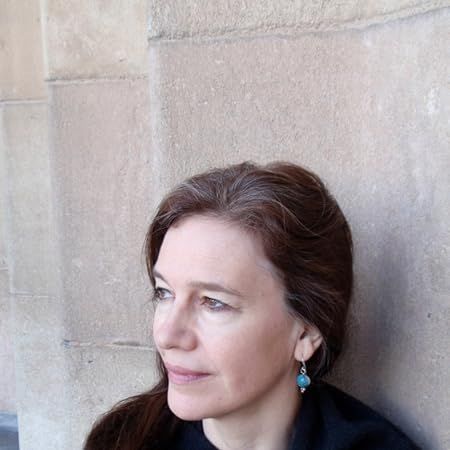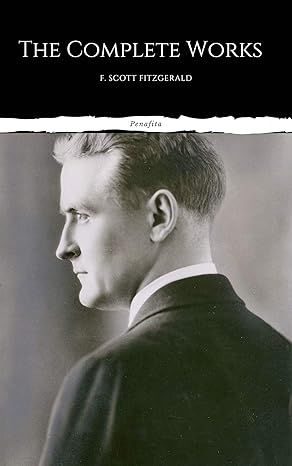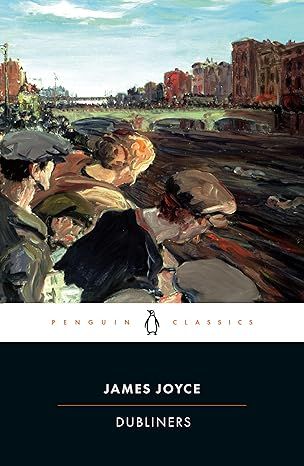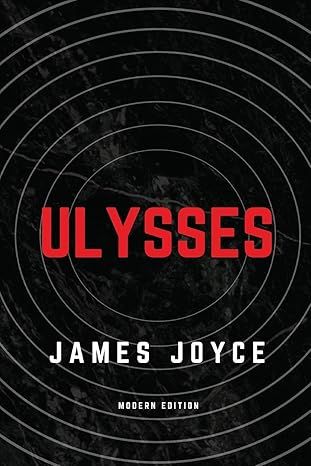The Painted Drum: A Novel (P.S.)
4.4
-
963 ratings
“Haunted and haunting. . . . With fearlessness and humility, in a narrative that flows more artfully than ever between destruction and rebirth, Erdrich has opened herself to possibilities beyond what we merely see—to the dead alive and busy, to the breath of trees and the souls of wolves—and inspires readers to open their hearts to these mysteries as well.”— Washington Post Book World
From the author of the National Book Award Winner The Round House, Louise Erdrich's breathtaking, lyrical novel of a priceless Ojibwe artifact and the effect it has had on those who have come into contact with it over the years.
While appraising the estate of a New Hampshire family descended from a North Dakota Indian agent, Faye Travers is startled to discover a rare moose skin and cedar drum fashioned long ago by an Ojibwe artisan. And so begins an illuminating journey both backward and forward in time, following the strange passage of a powerful yet delicate instrument, and revealing the extraordinary lives it has touched and defined.
Compelling and unforgettable, Louise Erdrich's Painted Drum explores the often-fraught relationship between mothers and daughters, the strength of family, and the intricate rhythms of grief with all the grace, wit, and startling beauty that characterizes this acclaimed author's finest work.
Kindle
$13.49
Available instantly
Audiobook
$0.00
with membership trial
Hardcover
$1.74
Paperback
$10.99
Ships from
Amazon.com
Payment
Secure transaction
ISBN-10
0060515112
ISBN-13
978-0060515119
Print length
304 pages
Language
English
Publisher
Harper Perennial
Publication date
January 21, 2019
Dimensions
5.31 x 0.68 x 8 inches
Item weight
2.31 pounds
Product details
ASIN :
B000FCKCV0
File size :
2640 KB
Text-to-speech :
Enabled
Screen reader :
Supported
Enhanced typesetting :
Enabled
X-Ray :
Enabled
Word wise :
Enabled
Editorial reviews
“A lovely addition . . . to a growing landscape as memorable and enduring as William Faulkner’s Yoknapatawpha County. — Atlanta Journal-Constitution
“Complex and graceful . . . Her most recent work shows Erdrich only becoming better with time.” — Cleveland Plain Dealer
“Erdrich soars in scenes that are resonant, poetic and exact, visions that will remain imprinted on the reader’s mind.” — Los Angeles Times Book Review
“A brilliant creation: it possesses the instantly persuasive strangeness of something faithful to life.” — New York Times Book Review
“This is simply a good book... Neatly etched characters, finely calibrated prose, and flashes of wisdom and wit throughout.” — Christian Science Monitor
“One of her best novels... Erdrich’s writing has become richer, her voice wiser... She shies away from nothing.” — Minneapolis Star Tribune
“Haunted and haunting... With fearlessness and humility... [Erdrich] inspires readers to open their hearts.” — Washington Post Book World
“This is her best book yet.” — Providence Journal
“Erdrich at her most accomplished. . . . Startling imagery and remarkable insights into love, foolishness, bravery and betrayal.” — Philadelphia Inquirer
“A top-notch read and one of her finest efforts.” — Denver Post
Sample
Chapter One
Revival Road
Faye Travers
Leaving the child cemetery with its plain hand-lettered sign and stones carved into the weathered shapes of lambs and angels, I am lost in my thoughts and pause too long where the cemetery road meets the two-lane highway. This distraction seems partly age, but there is more too, I think. These days I consider and reconsider the slightest of choices, as if one might bring me happiness and the other despair. There is no right way. No true path. The more familiar the road, the easier I'm lost. Left and the highway snakes north, to our famous college town; but I turn right and am bound toward the poor and historical New England village of Stiles and Stokes with its great tender maples, its old radiating roads, a stern white belfry and utilitarian gas pump/grocery. Soon after the highway divides off. Uphill and left, a broad and well-kept piece of paving leads, as the trunk of a tree splits and diminishes, to ever narrower outgrowths of Revival Road. This is where we live, my mother and I, just where the road begins to tangle.
From the air, our road must look like a ball of rope flung down haphazardly, a thing of inscrutable loops and half-finished question marks. But there is order in it to reward the patient watcher. In the beginning, the road is paved, although the material is of a grade inferior to the main highway's asphalt. When the town votes swing toward committing more money to road upkeep, it is coated with light gravel. Over the course of a summer's heat, the bits of stone are pressed into the softened tar, making a smooth surface for the cars to pick up speed. By midwinter, the frost creeps beneath the road and flexes, creating heaves that force the cars to slow again. I'm glad when that happens, for children walk this road to the bus stop below. They walk past with their dogs, wearing puffy jackets of saturated brilliance -- hot pink, hot yellow, hot blue. They change shape and grow before my eyes, becoming the young drivers of fast cars who barely miss the smaller children, who, in their turn, grow up and drive away from here.
As I say, there is order, but the pattern is continually complicated by the wilds of occurrence. The story surfaces here, snarls there, as people live their disorder to its completion. My mother, Elsie, and I try to tack life down with observation. But if it takes a lifetime to see things clearly, and a lifetime beyond, even, perhaps only the religious dead have a true picture of our road. It is, after all, named for the flat field at its southern end that once hosted a yearly revival meeting. Those sweeping conversions resulted in the establishment of at least one or two churches that now seem before their time in charismatic zeal. Over the years they merged with newer denominations, but left their dead sharing earth with Universalists and Quakers and even utter nonbelievers. As for the living, we're trapped in scene after scene. We haven't the overview that the dead have attained. Still, I try to at least record connections. I try to find my way through our daily quarrels, surprises, and small events here on this road.
We were home doing pleasant domestic chores on a frozen Sunday in the dead of winter when there was a frantic beating at our door. In alarm, Elsie called me. I came rushing from the basement laundry to see a young man standing behind the glass of the back storm door, jacketless and shivering. I saw that he'd lost a finger from the hand he raised, and knew him as the Eyke boy, now grown, years past fooling with his father's chain saw. But not his father's new credit-bought car. Davan Eyke had sneaked his father's new automobile out for an illicit spin and lost control coming down off the hill beside our house. The car slid toward a steep gully lined with birch. By lucky chance, it came to rest pinned precisely between two trunks. The white birch trees now held the expensive and unpaid-for white car in a perfect vise. Not one dent. Not one silvery scratch. Not yet. It was Davan's hope that if I hooked a chain to my Subaru and backed up the hill I would be able to pull his car gently free.
My chain snapped, and the efforts of others only made things worse over the course of the afternoon. At the bottom of the road a collection of cars, trucks, equipment, and people gathered. As the car was unwedged, as it was rocked, yanked, pushed, and let go, as different ideas were tried and discarded, as the newness of the machine wore off, Davan saw his plan was lost and he began to despair. With empty eyes, he watched a dump truck winch his father's vehicle half free, then slam it flat on its side and drag it shrieking up a lick of gravel that the town road agent had laid down for traction. Over the years our town, famous for the softness and drama of its natural light, has drawn to itself artists from the large cities of the eastern seaboard. They have usually had some success in the marketplace, and can now afford the luxury of becoming reclusive. Since New Hampshire does not tax income, preferring a thousand other less effective ways to raise revenue, wealthy artists find themselves wealthier, albeit slightly bored. Depending on their surroundings for at least some company, they are forced to rely on those such as myself -- a former user of street drugs cured by hepatitis, a clothing store manager fired for lack of interest in clothes, a semi-educated art lover, writer of endless journals and tentative poetry, and, lastly, a partner in the estates business my mother started more than fifty years ago.
Read more
About the authors
Louise Erdrich
Louise Erdrich is one of the most gifted, prolific, and challenging of American novelists. Her fiction reflects aspects of her mixed heritage: German through her father, and French and Ojibwa through her mother. She is the author of many novels, the first of which, Love Medicine, won the National Book Critics Circle Award and the last of which, The Round House, won the National Book Award for Fiction in 2012. She lives in Minnesota.
Read more
Reviews
Customer reviews
4.4 out of 5
963 global ratings
Boston Bean
5
Great easy reading by this author
Reviewed in the United States on December 31, 2023
Verified Purchase
Easy and enjoyable as always by This author
2 people found this helpful
Anne’s Kindle Fire
5
I loved this book
Reviewed in the United States on July 24, 2024
Verified Purchase
Great writing… author knows her subject and how to tell a story!
W. Law
5
Moving, spiritual narrative,
Reviewed in the United States on May 26, 2024
Verified Purchase
This is such a beautiful story my words fail. This is my second Louise Erdrich novel. I let the family drum go a few years ago so i personally understand the depth of such loss, the power of its voice and the loss of connection. Just a beautiful spititual story about how we are all tied together in mysterious ways.
Top Louise Erdrich titles
View all
The Last Report on the Miracles at Little No Horse: A Novel (P.S.)
4.5
-
1,390
$1.51
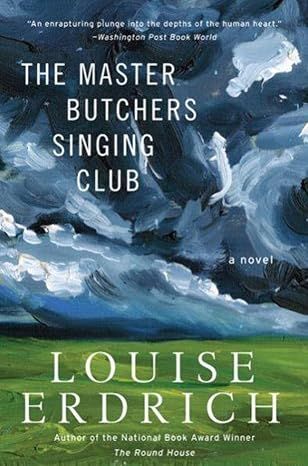
The Master Butchers Singing Club: A Novel
4.3
-
1,437
$1.96

The Round House: A Novel
4.3
-
12,057
$3.88
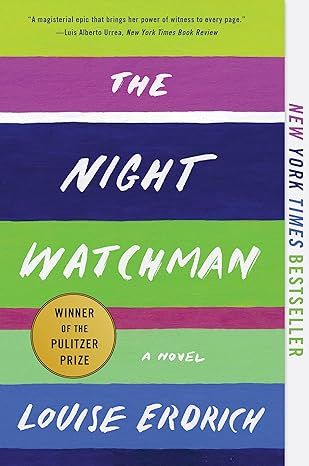
The Night Watchman: A Novel
4.4
-
21,822
$9.00

Love Medicine: Newly Revised Edition (P.S.)
4.3
-
1,019
$11.99

The Sentence: A Novel
4.3
-
8,450
$2.99
Similar Books
Best sellers
View all
The Tuscan Child
4.2
-
100,022
$8.39
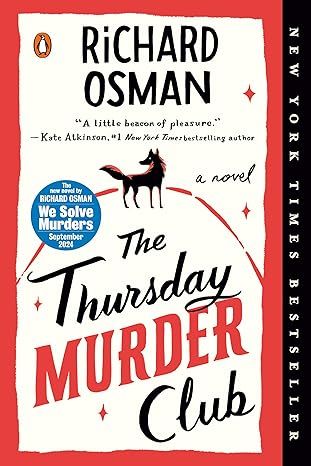
The Thursday Murder Club: A Novel (A Thursday Murder Club Mystery)
4.3
-
155,575
$6.33

Sapiens: A Brief History of Humankind
4.6
-
140,302
$13.49

The Butterfly Garden (The Collector, 1)
4.3
-
88,556
$9.59

Things We Hide from the Light (Knockemout Series, 2)
4.4
-
94,890
$11.66

The Last Thing He Told Me: A Novel
4.3
-
154,085
$2.99

The Perfect Marriage: A Completely Gripping Psychological Suspense
4.3
-
143,196
$9.47

The Coworker
4.1
-
80,003
$13.48

First Lie Wins: A Novel (Random House Large Print)
4.3
-
54,062
$14.99

Mile High (Windy City Series Book 1)
4.4
-
59,745
$16.19

Layla
4.2
-
107,613
$8.99

The Locked Door
4.4
-
94,673
$8.53

